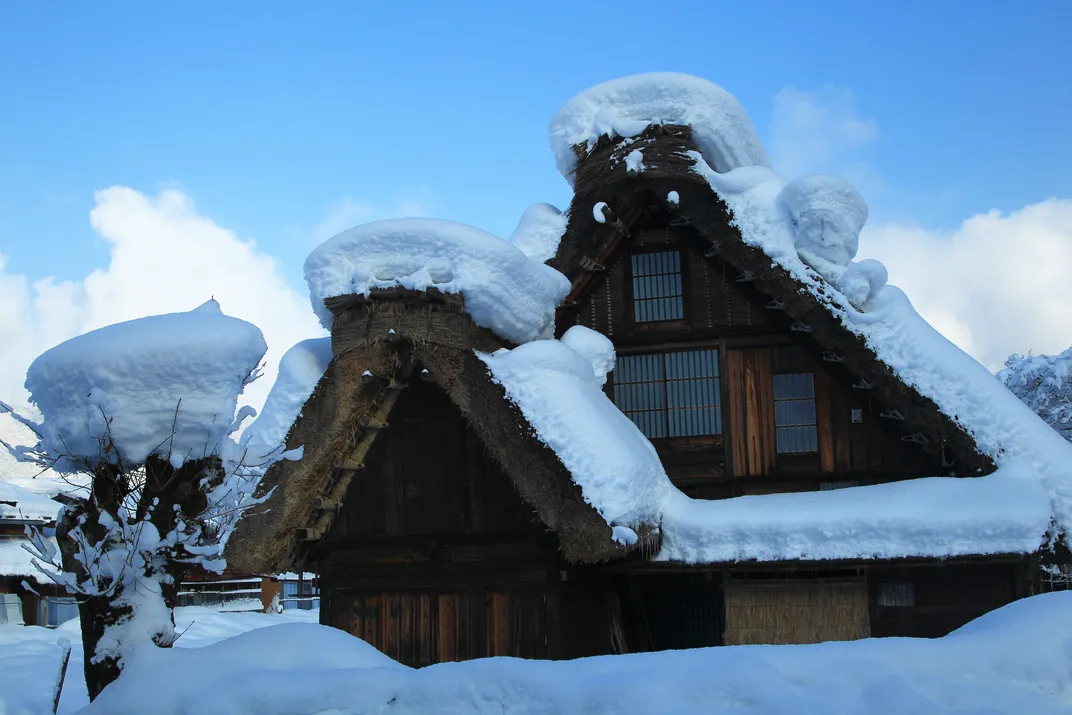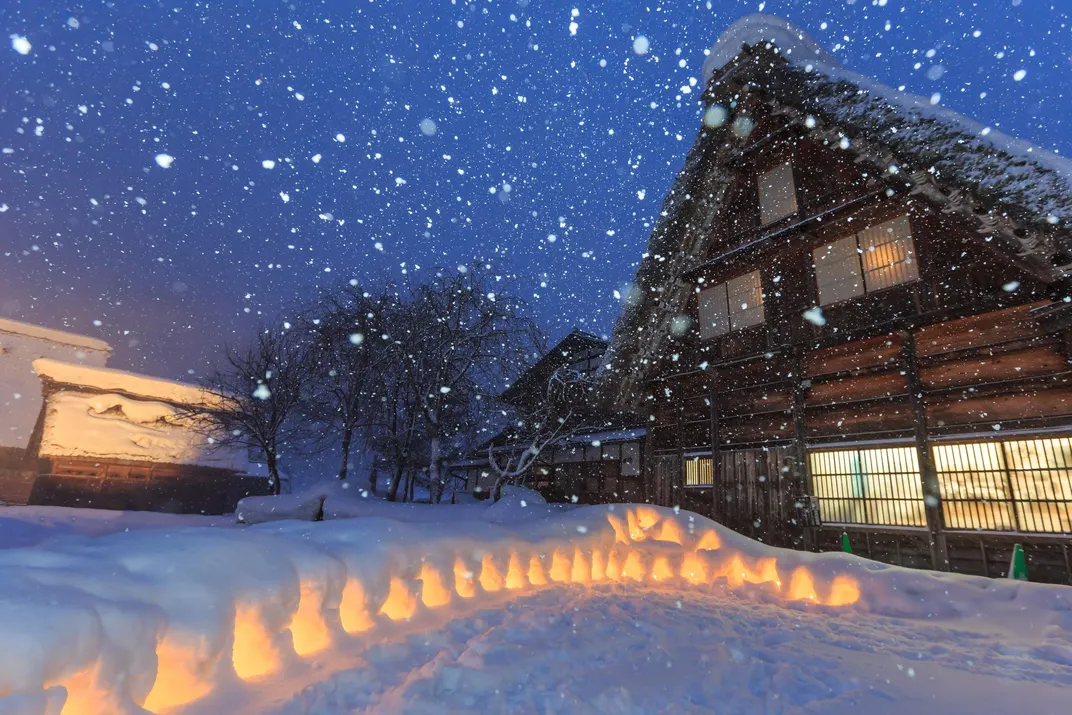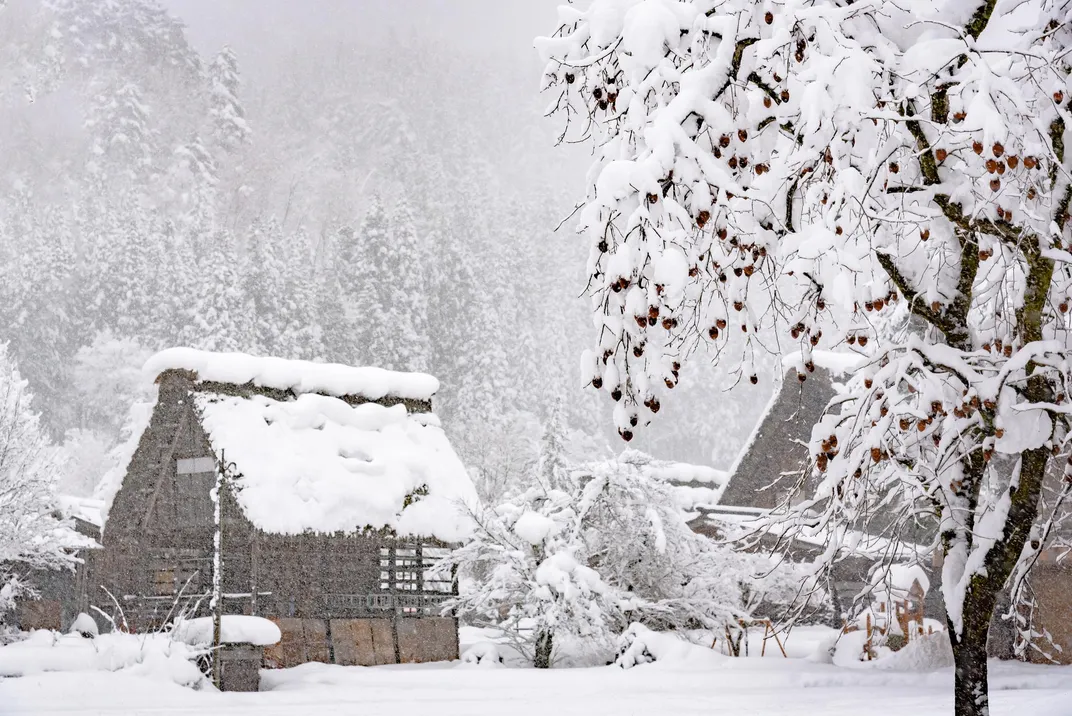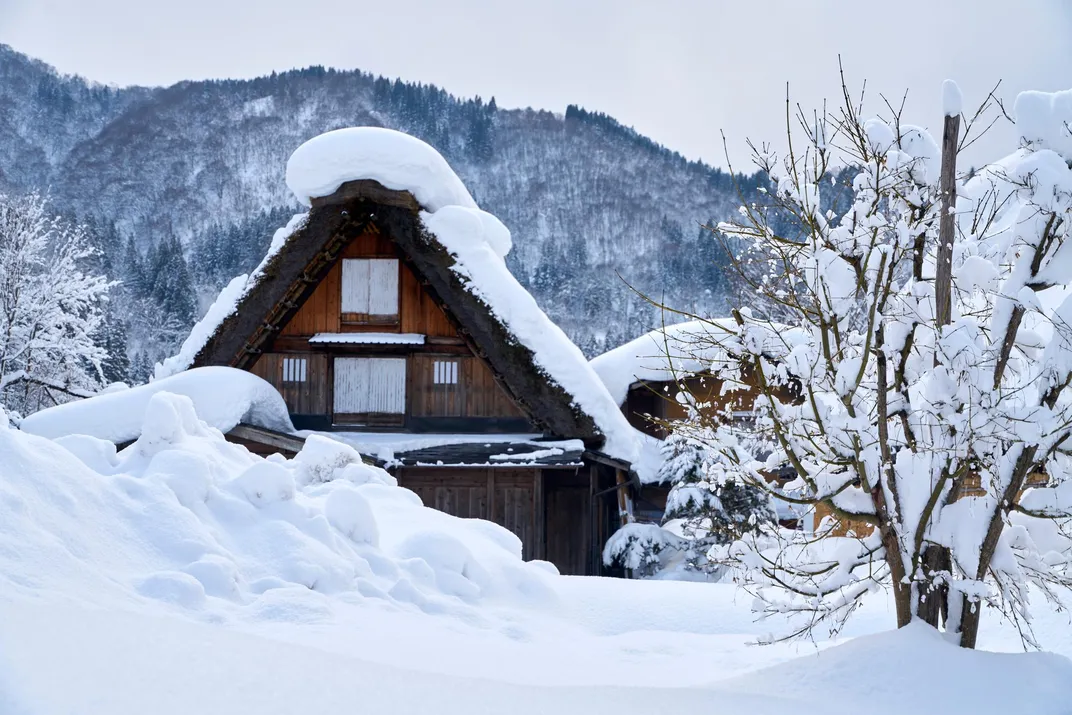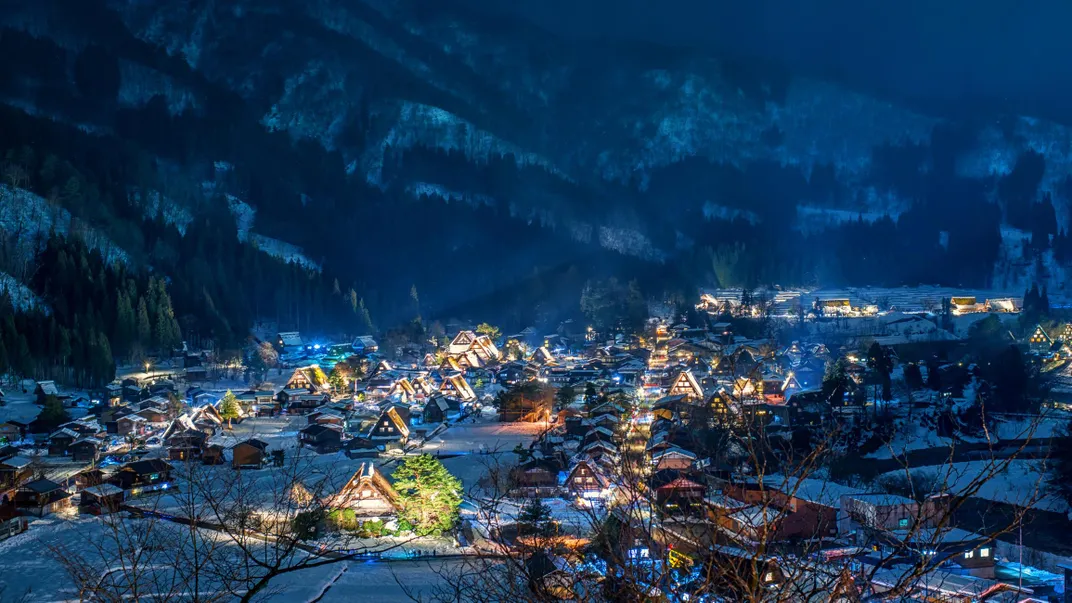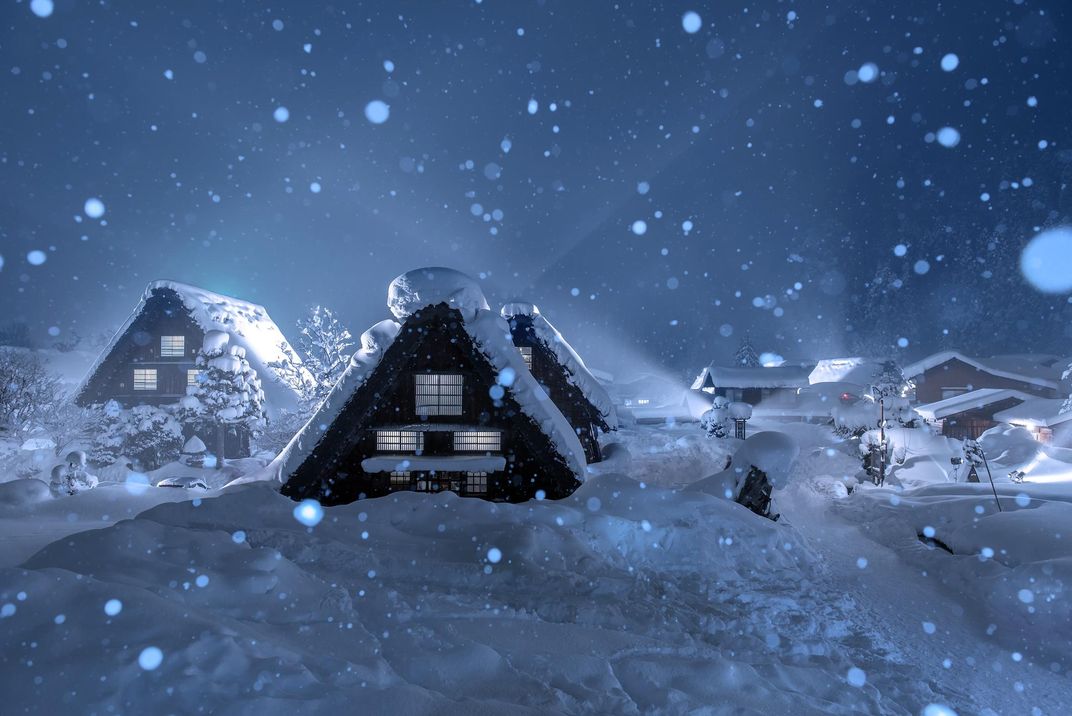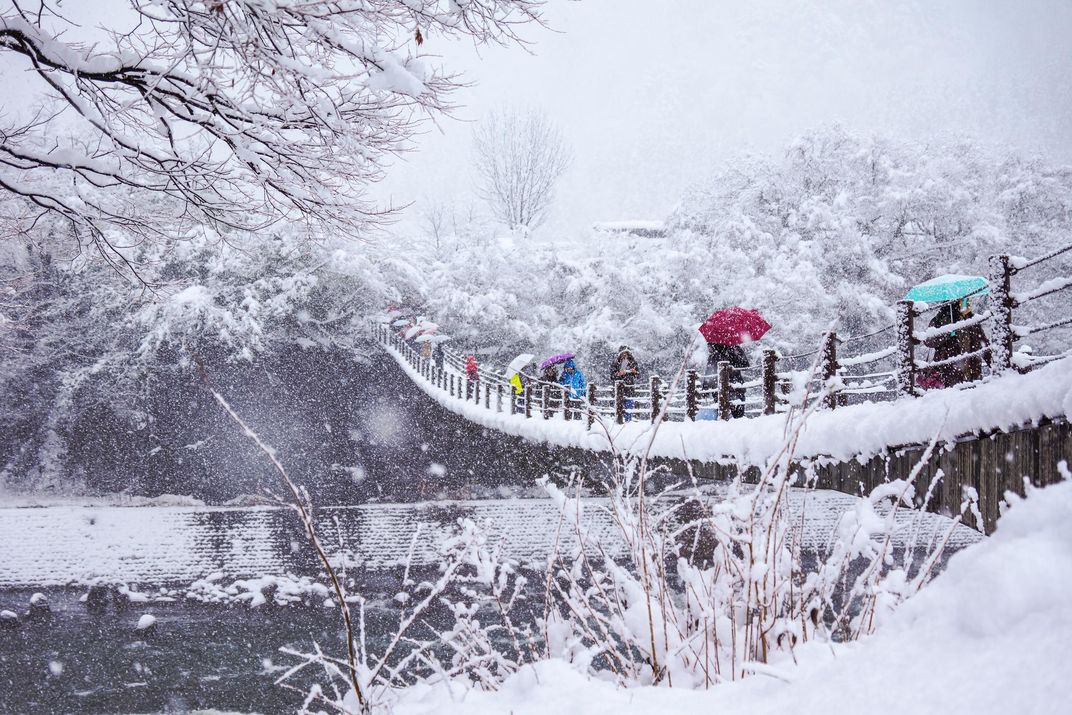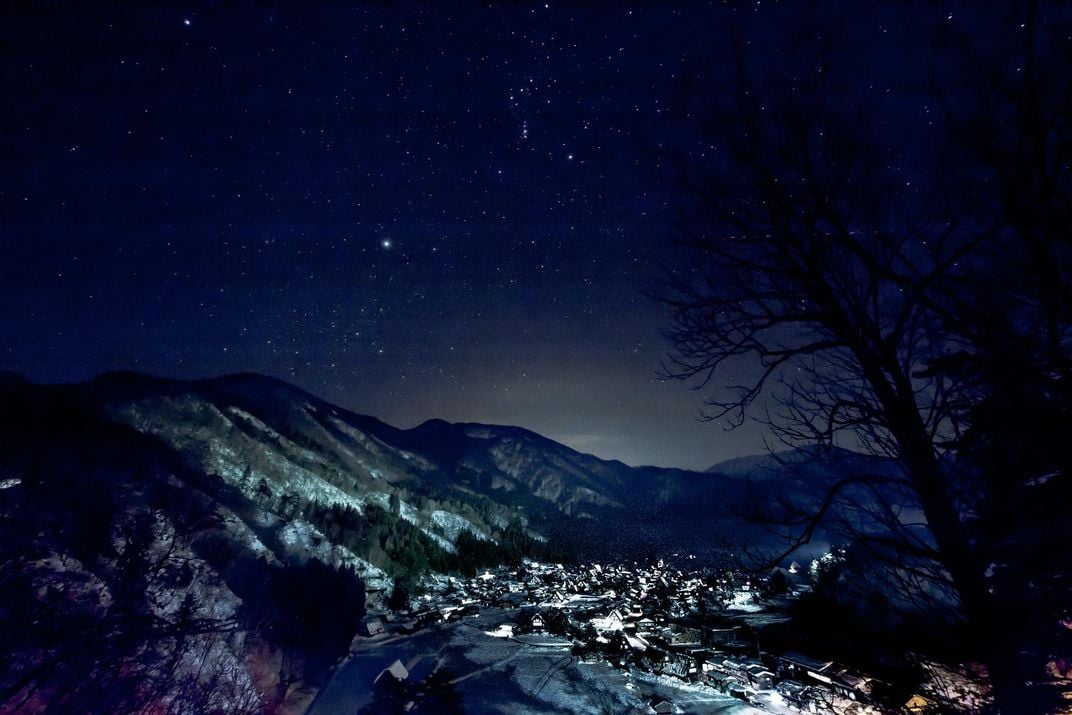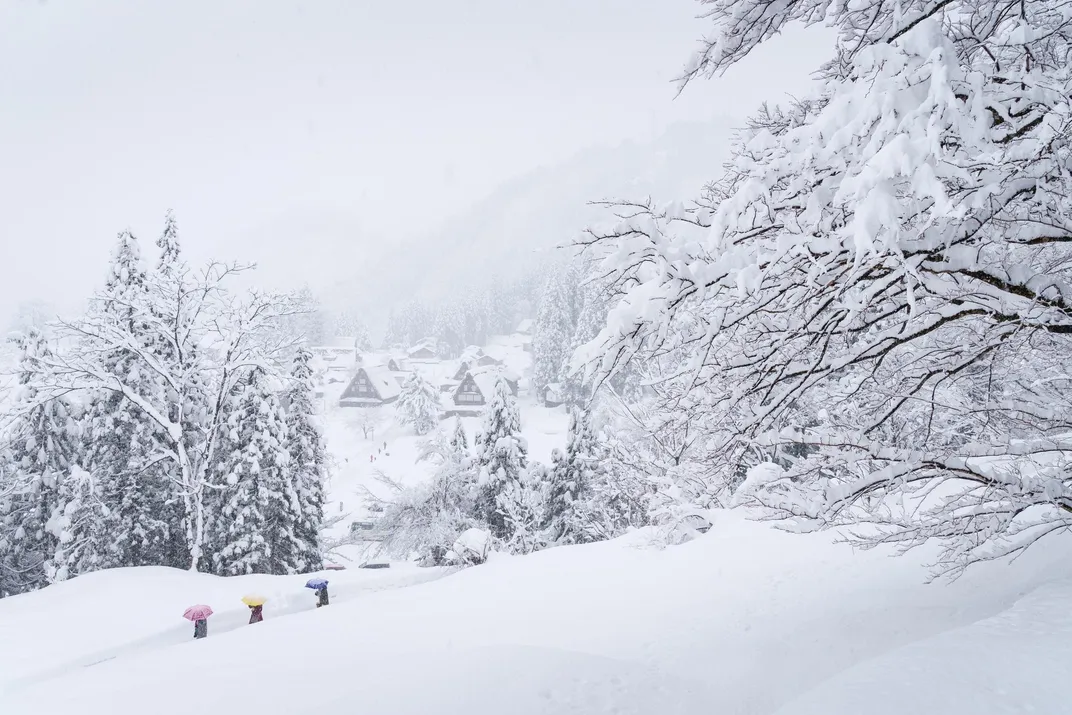This World Heritage Site in Japan Is One of the Snowiest Places on the Planet
And you thought Boston got a lot of snow
The “bomb cyclone” dumped more than a foot of snow on most of New England last week. But this storm paled in comparison to what happens every year in Shirakawa-go, Japan.
While some in the United States may be familiar with “lake effect” snow, the phenomenon is amplified in Japan, where there’s “ocean effect” snow.
Weather patterns blow from Siberia across the (relatively warm) Sea of Japan, creating clouds with lots of moisture. When these clouds enter the higher altitudes of the Japanese Alps, they dump out all the precipitation they’ve built up in the form of snow.
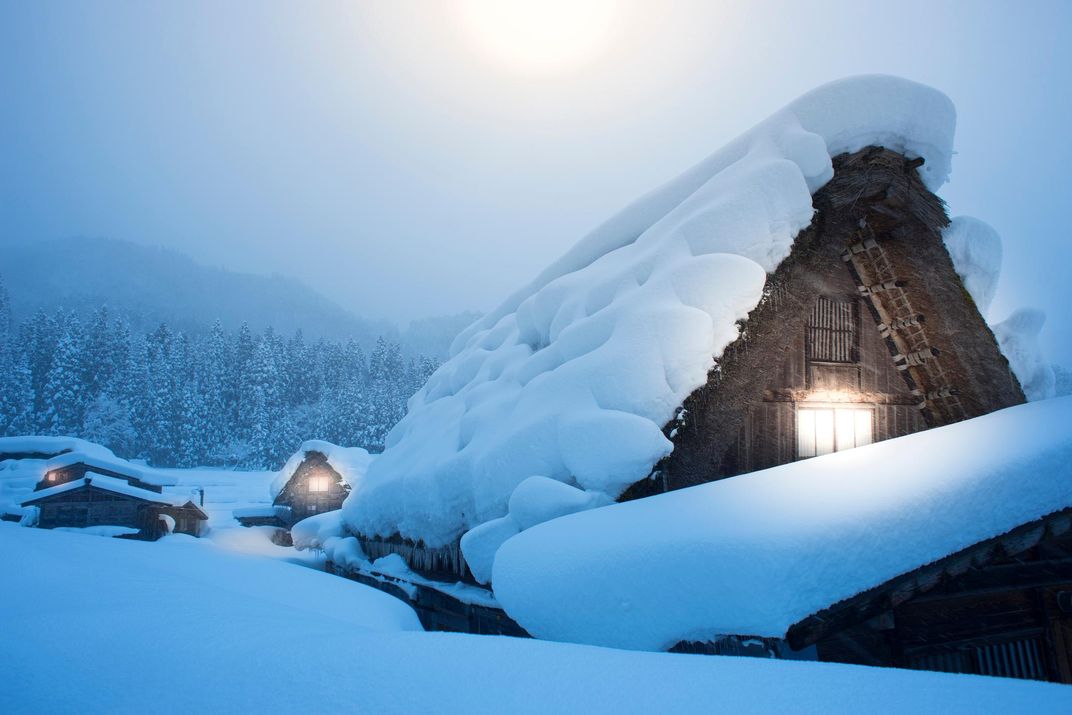
The picturesque mountain village of Shirakawa-go — which literally translates as “White River Village” — has recorded an average of 415 inches (that's about 35 feet) of snowfall every year, according to the Japan Meteorological Agency. The town has become famous for its winter nighttime illuminations of its historic houses covered in snow.
The UNESCO World Heritage village developed in relative isolation, as it’s surrounded by mountains on all sides.
Because of its solitary location, inhabitants developed a unique style of architecture that still exists in 114 huts.
The thatched-roof huts were specifically designed to withstand heavy amounts of snowfall and some date back more than 250 years. These huts have since been repurposed as museums, restaurants and guest houses for tourists.
Other articles from Travel + Leisure:
